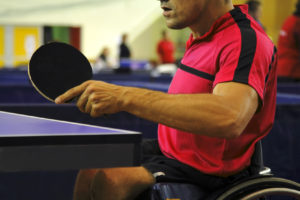Periodization is a systematic approach to training that involves varying training variables, like volume and intensity, over time. The objective of this planning is for the athlete to reach his or her peak at a specific, pre-determined time, while optimizing recovery to avoid overtraining and injury. Periodization is based on Hans Selye’s theory of biological stress and the body’s response to a stressor: General Adaptation Syndrome (GAS). There are three phases to GAS:
- Alarm: This is the body’s initial reaction to the stressor (the exercise). You may experience muscle soreness, fatigue, and a small drop in performance.
- Resistance: The body adapts to the stressor. You may experience decreased soreness and stiffness, a greater tolerance for the activity, and improved performance. Periodization is used to try to stay within the resistance phase.
- Exhaustion: This occurs if the stressor continues beyond the point to which the body can adapt. In exercise, this can be a result of overtraining.
A periodized training plan is divided into several subsets of cycles. Macrocycles generally last several months to a year, culminating with a competition phase. Mesocycles can be several weeks long, and are often associated with a stage of the athlete’s season, eg. pre-season, in-season, off-season. Within mesocycles, microcycles are usually several days to a couple weeks, with the majority being a week.
Periodization for Strength
Two of the most common types of periodization are linear periodization and undulating or non-linear periodization. A newer, third type is block periodization. These three types are often used in a weightlifting context, though may be manipulated for aerobic sports or team sports.
- Linear Periodization:
- Training load gradually increases while volume is reduced
- Broken down into phases that focus on one parameter at a time, eg. strength; power; speed
- Originally designed for Olympic weightlifters preparing for one peak competition per year
- Undulating/Non-Linear Periodization:
- Training load and volume are both modified daily or weekly
- Can target multiple parameters in the same week
- Block Periodization:
- Training focuses only on adaptations the athlete needs, eg. will not target endurance if it is not required
- Each modality is performed in large volume separately from other modalities, eg. no box jumps after squats because it trains two different modalities: strength and agility
- Three phases:
- Accumulation – Build work capacity with high volume of more general exercises
- Transmutation – Perform specific exercises with a greater load; promote strength overload with accommodating resistance (resistance bands, chains)
- Realization – Practice movements that are competition-specific, at high loads and low volume
- Created to accommodate multiple peaks/events in a year
Periodization for Endurance Athletes
There are two types of periodization geared more towards endurance athletes.
- Traditional Periodization:

- Four phases/mesocycles:
- Preparatory – Moderate to high volume of low intensity: develop an aerobic base with overdistance and endurance training
- Precompetition – Moderate volume of moderate to high intensity: build intensity with tempo work and sessions at the lactate threshold and maximal effort
- Competition – Low to moderate volume of high intensity: the race; usually preceded by a taper
- Transition – Low volume of low intensity: the off-season
- Four phases/mesocycles:
- Inverse Periodization:
- Order of training focus:
- Strength and technique
- Speed and strength
- Aerobic power and efficiency
- Aerobic capacity right before the competitive season
- Athletes should be experienced and already have a solid cardiovascular fitness to be able to manage the greater strength and speed training at the start of the season
- Order of training focus:
Either periodization type can then be implemented using the standard method or the reverse method.
- Standard method: Repeatedly build intensity gradually over a few weeks, with regular recovery periods
- Suitable for novice and intermediate endurance athletes
- Reverse method: Start with a higher intensity and gradually decrease the load throughout the mesocycle
- Best for athletes with seven or more years of experience
- Athletes can attain a higher volume and load because the most intense week follows a recovery week, avoiding the accumulated fatigue of the standard method
Which Strategy Is the Best?
In the context of for upper-body or lower-body strength, there is no difference in the literature between the effectiveness of linear periodization and of undulating/non-linear periodization. There have been studies that have indicated that block periodization is better and ones that have found the opposite. As a newer periodization type, there is still much to learn about it, and at this time, there is no decisive conclusion.
That being said, an extremely interesting review by Afonso et al. (2017) looked at whether or not existing research on periodization is actually reliable. They found several issues with current approaches and their results are important to consider when reading and hearing about the extensive benefits of periodization:
- Most studies did not account for confounding factors: supplementation, nutrition, etc.
- Adaptations are being assessed as an average, despite the fact that there is notable variation between individuals in their responses to training interventions
- Studies focused on physical dimensions of training without consideration of psychological, technical, and tactical load
- “Periodization” is being used interchangeably with “variation”
- Non-periodized programs can be varied
- Periodization is more than variation in that it attempts to time for a peak performance
- Variation in training may be the difference-maker, not necessarily periodized variation
- No paper has used “periodization” in its true sense by predicting the magnitude and timing of adaptations
Take-Home Message
 To produce the greatest adaptations to training, it is important to include variation. While variation does not automatically mean periodization, a periodized training plan is a good way to organize your season: it forces long-term planning, provides more immediate structure, and considers injury prevention and overtraining. It can also help to ensure you allot an appropriate amount of time to training different aspects of your sport. The right periodization strategy will depend on an athlete’s experience, fitness, and individual characteristics. Additionally, a single approach may not be effective throughout the season, and it may be necessary to change your strategy throughout the year. Like with all exercise training programs, people will range from non-responders to high-responders, and what works for one person, may not be optimal for another.
To produce the greatest adaptations to training, it is important to include variation. While variation does not automatically mean periodization, a periodized training plan is a good way to organize your season: it forces long-term planning, provides more immediate structure, and considers injury prevention and overtraining. It can also help to ensure you allot an appropriate amount of time to training different aspects of your sport. The right periodization strategy will depend on an athlete’s experience, fitness, and individual characteristics. Additionally, a single approach may not be effective throughout the season, and it may be necessary to change your strategy throughout the year. Like with all exercise training programs, people will range from non-responders to high-responders, and what works for one person, may not be optimal for another.
